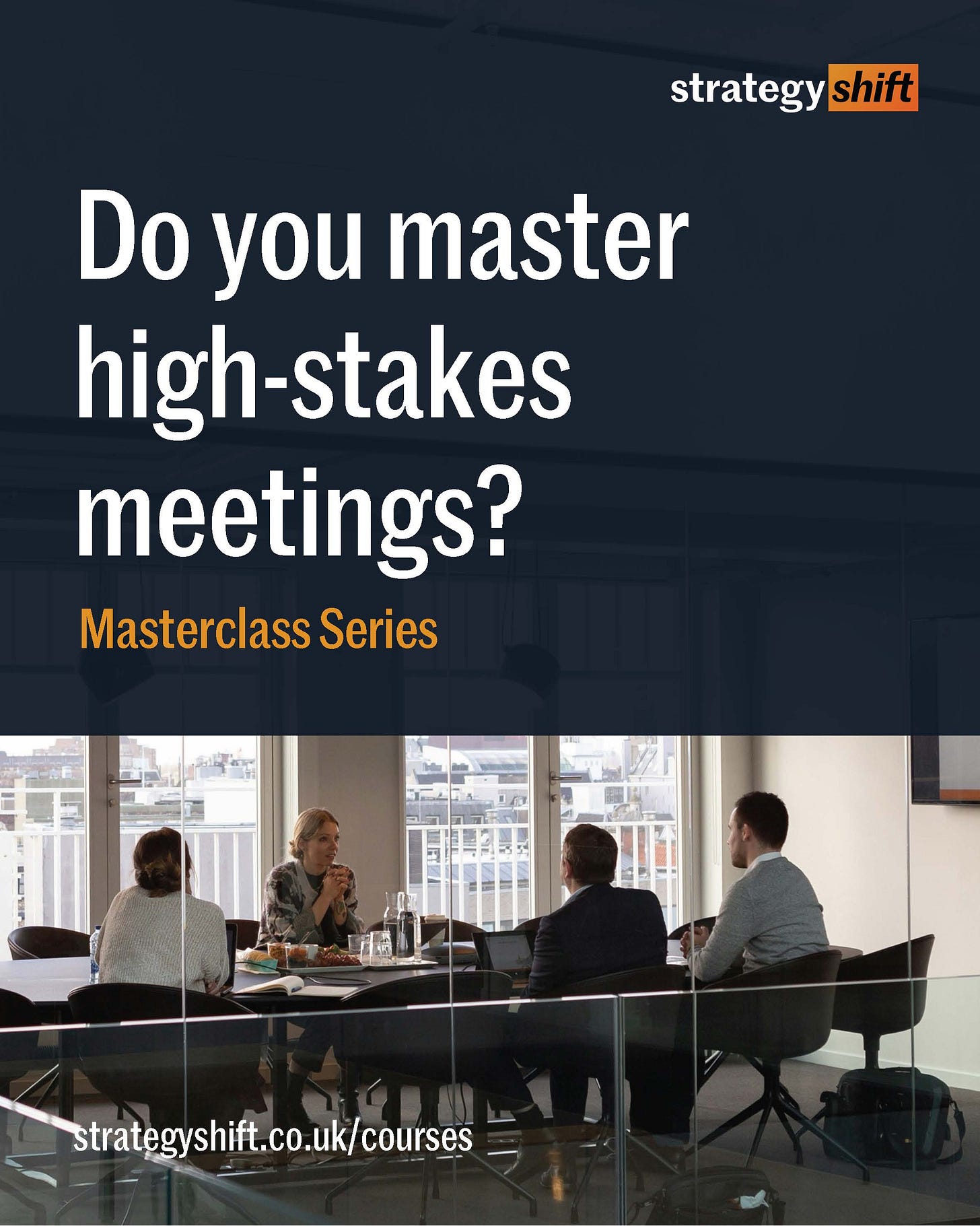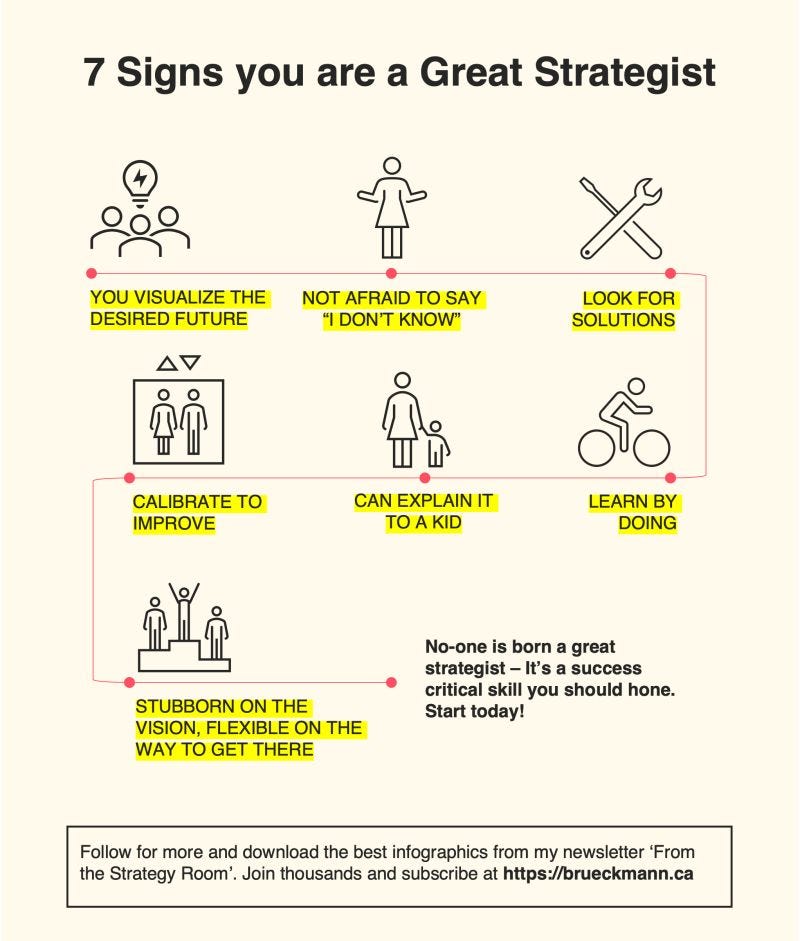Using system 1b thinking
You have more choices to play with than you think
Welcome to the first edition of my Every Day is a Strategy Day newsletter. It’s an evolution of the Strategic Leader newsletter - more provocative, punchy, practical, and personal. I hope you like it!
Think.
There are exercises where we’re encouraged to visualise our best possible future. On a postcard, in a drawing, or even a song. It can be invigorating.
But then reality sets in. We resort to what we know and what we feel comfortable with. Controlled, if not overwhelmed, by the organisational (inc family, often) system we operate in we find plenty of reasons why it’s not possible.
It doesn’t have to be this way.
A lot of my work with executives involves encouraging them to increase their optionality in critical moments. They’ve assumed away plenty of options and forgotten how to exercise them.
Research tells us that we make around 35,000 choices a day. I was prompted to find this number when I saw on my Noom app – psychology-based content to help me with better food and lifestyle choices – that we make 227 food choices every day.
It made me wonder how we could convert some of the implicit, intuitive, automatic (system 1 in Kahneman’s vocabulary) choices into more intentional, conscious choices (system 2). What if we could create a new system, call it 1b, in which the strategy choices are deliberate AND fast?
Pick a frame of reference that works for you. It could be an issue you’re grappling with or a situation that matters. I bet there are many untapped choices you could play with to help you make progress.
Start with this question: what does the issue/situation/person most need from me? What’s the best possible contribution I can make (that few other people can make)?
Centre yourself – stop, breathe, reestablish your posture. Fill up your reservoir of belief. Tap into supporters if need be.
Repeat.
Try it with meetings. High-stakes meetings are a setting that lead many of us to despair. So important, yet often so wasteful and disappointing.
But it doesn’t need to be this way. There are plenty of opportunities to make smarter choices throughout the process from design to decisions. I believe this so strongly that I’ve designed a series of live Masterclasses, with a supporting toolkit, to help you do this. It’s one of the best things I’ve done for a while, I’m told. It starts on October 30th. For more details and to enrol, check it out here.
Listen.
I love this take away from Lancefield on the Line podcast with Neil Bearden, Storytelling Advisor, who talks about how thinks about making changes in his life (edited a little):
“Life is this sort of random series of transitions over which you have some control, but there's also a lot of randomness. Ask yourself: when you imagine where you are right now and you ask yourself, does this feel right? And if the answer is no, it seems reasonable to assume that if you don't do something, it's going to continue to feel that way.
The optionality (in life) that I'm relying on is myself, my future selves, and making good decisions when those options present themselves… believing in myself is not just believing in this guy, but also trusting, believing in that guy five years from now. And so let me do him a favour and put him on a path where he can update and learn as much as possible.”
Visualise.
Alex Brueckmann, Strategy facilitator for executives teams, sets out seven signs that you’re a strategist in this appealing visual. Of all of them, I like ‘stubborn on the vision, flexible on the way’.
How many of them do you live up to?
Read.
Here’s a great passage from Amy Edmondson’s Book ‘Right Kind of Wrong: Why Learning to Fail Can Teach Us to Thrive’:
“Failing well is not an exact science. The manual is still being written and will forever be revised. To begin, when you consciously stretch to try new things, your experiments necessarily bring the risk of failure. This is how to get more comfortable with it. When you take more risks, you will experience, more, not less, failure. But two good things happen. One, you realise that you don’t die of embarrassment. Two, you build muscle so that each next failure stings less. The more you experience failure, the more you realise you can still be okay. More than okay: you can thrive.
To do this, it helps to incorporate a few basic failure practices – persistence, reflection, accountability, and apologising – into your life.”
How well do you do this, every day?
Challenge yourself.
Schedule moments before and after your meetings, no more than 2 mins long. To help you make choices about where to focus, and what you’ve learned. And to identify immediate choices. I’ve been doing this for some time, and it really works (complemented by longer preparation and reflection, where needed).
Strategy Shift.
I’ve been working on a new HBR article, focus on what it takes to use the transition time between leadership role wisely so that you make a strong start. I can’t wait to share that with you. I’ve also written a chapter on ‘Developing strategic people’ for a forthcoming Thinkers50 book, due out in November 2024.
With positivity,
David.





